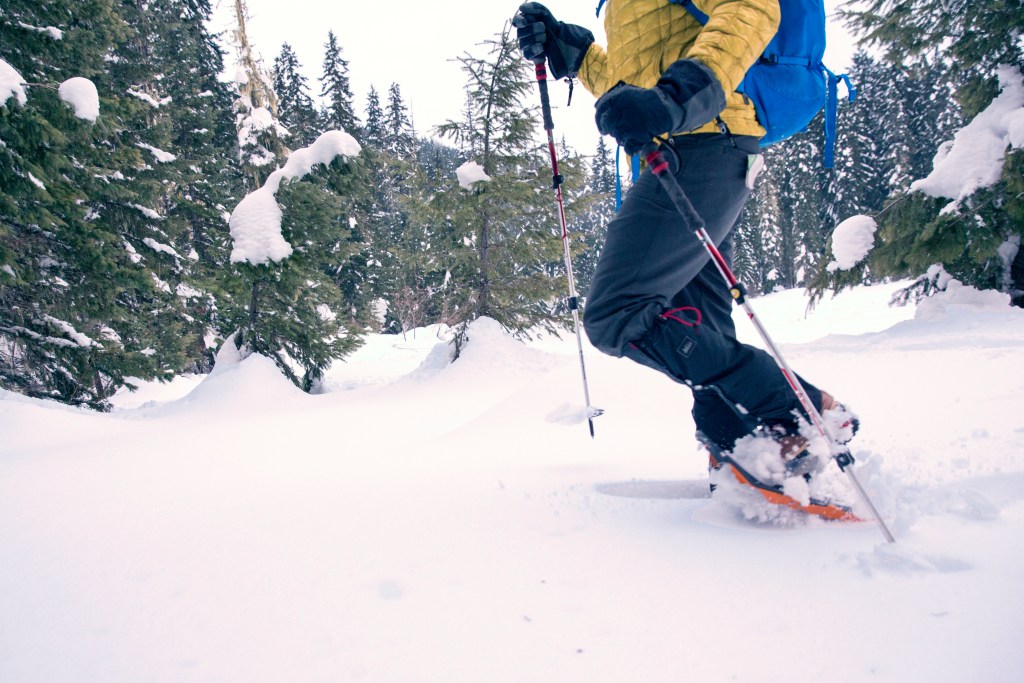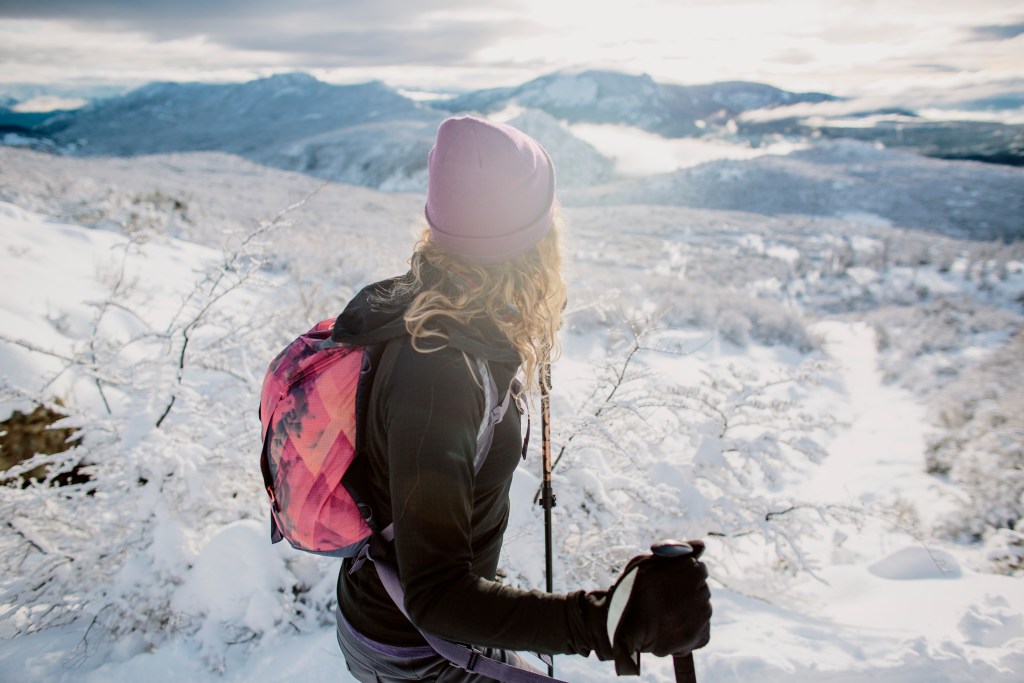One of the best things about the co-op is the thriving community of gearheads, dirtbags, bird nerds, thru-hikers, peak-baggers, storytellers and more who work in our stores and headquarters, guide our trips and teach our classes. We tapped into that expert knowledge to answer some of your burning questions about terrain, gear, safety, etiquette—anything! The co-op has your back.
The question “Do I have to stay on a trail when I’m snowshoeing?” was submitted by Tasha Drake, REI member since 2011.
The special freedom of a pair of snowshoes is that you can go anywhere there’s snow. “There really is no trail,” says Dave Swan, a Seattle-based REI Outdoor School instructor who leads snowshoeing trips at Mount Rainier and in the Cascade Mountains.
Dave explains that winter trails aren’t groomed for snowshoeing like they are for cross-country skiing, so snowshoers make their own. If you find a trail that’s nice and tamped-down, you have the snowshoers who went before you to thank. Walking on an existing trail is easier than creating a new one, which makes popular snowshoe areas great for beginners, but it’s still important to plan ahead by checking the avalanche report and carrying a map. Just because you’re following someone else’s footsteps, that doesn’t mean they knew what they were doing.

The real fun in snowshoeing is in breaking trail. You can trek up and down powdery slopes through pristine wilderness. Cutting new steps is a much more vigorous workout than walking on a snow-covered roadbed, and you can revel in the peaceful stillness around you. Also, you don’t have to worry about trampling foliage or contributing to erosion, as you would in summer. “You’re not doing any damage to the plants and animals below the snow more than three feet deep,” Dave says. So you’re free to frolic.
Have Fun, But Be Risk-Savvy
But as the adventure component goes up, so does the risk. Before you break trail, you should know how to identify avalanche-prone areas and have solid navigational skills. Dave says the most important thing to do before heading to the backcountry is to “always, always, always check the avalanche report, and know how to read it.” Many REI stores offer free avalanche safety classes. Before venturing out, make sure you have a shovel, probe, and avalanche beacon, and practice using your gear.
Another thing to watch out for when you’re breaking trail are tree wells. “Right now there’s 5 feet of snow up at Mount Rainier,” Dave says. “A 6-foot tree can be sticking out of the snow and looking like a nice little tree, but if you step in a hollow spot near the trunk, you could just break through.”
Falling into a tree well presents a real danger of Snow Immersion Suffocation (SIS). It’s best to assume that all trees in deep snow have some depth of tree wells, and should be avoided.

Mind Your Manners
If you’re not yet ready for the backcountry and you’d prefer to snowshoe in a multi-use or cross-country ski area, pay attention to etiquette, especially when it comes to the groomed cross-country ski tracks. “Stay off the tracks!” Dave says. “If you have to cross them, cross them as cleanly as possible.”
The same goes for the backcountry, where skiers work hard to skin up the mountain and leave flat tracks to use again. When Dave leads REI trips to Mount Rainier, he’s careful to explain to his group that walking on a skin track made by skiers is a serious backcountry faux pas. Snowshoes make holes in the snow, which create a bumpy track.
Dave’s advice for less experienced snowshoers is to go on an REI or ranger-led trip. But if you’re going alone, pay attention to the landscape, check the avalanche report, and follow good etiquette. Breaking your own snowshoe trail is hard work, but it’s well-worth the effort. Go prepared, and have fun!
Meet the Expert
Dave Swan has been an REI employee for over 27 years. As a Seattle-based Outdoor School instructor, he leads trips all around Washington and empowers others with skills and knowledge to explore the wilderness on their own.
